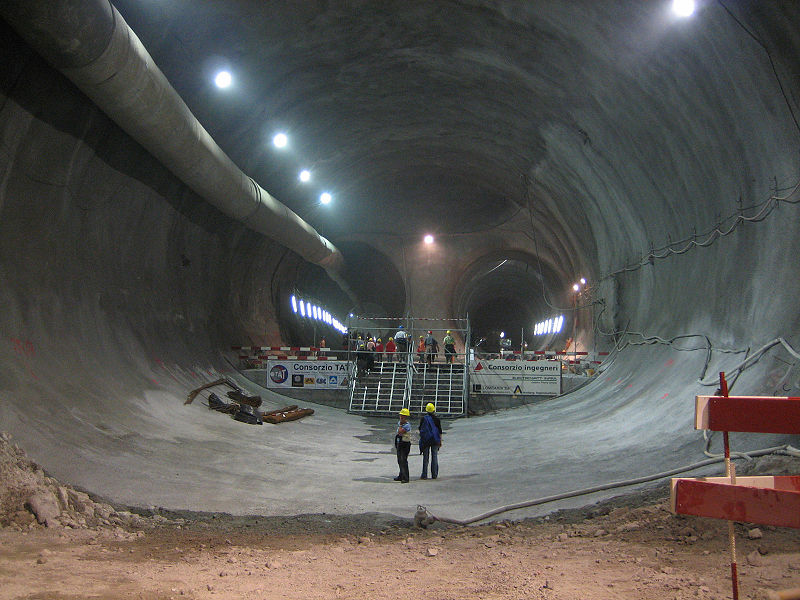

The Gotthard Base Tunnel, two parallel tubes of over 35 miles each through the Swiss Alps, is a ridiculously ambitious undertaking, one that has taken 14 years so far and still has a few left to go before it’ll be operational. But the Swiss have achieved a major milestone today: One of the tunnels broke through, cementing the Gotthard’s place as the world’s longest tunnel.
Drilling of the tunnel began way back in 1996 (remember those heady days–the drillers might have been humming along to Joan Osborne’s breakthrough, “One of Us”), and has encountered its fair share of difficulties in the succeeding decade and a half. From the Sedrun (a layer of soft rock near the middle) to a near-disaster during the test phase that unleashed a torrent of water and sand, the drilling has not been particularly easy. One of the main drills was even trapped by falling sand, held incapable of drilling for a whopping six months at one point.
The tunnel was drilled from the middle out–an 800-meter tunnel was drilled vertically into the middle of the prospective track, and then two drills did their work in opposite directions. Well, really, that’s only half of the total work: The tunnel is actually two single-track, parallel tunnels, connected by smaller spurs every thousand feet or so. The east-most tunnel finally broke through the last few meters of rock today, completing the drilling phase and officially making the Gotthard the world’s longest tunnel. (The western tunnel will be completed around April of 2011.)
When completed, probably in 2016 or 2017 (the project is actually ahead of schedule at the moment), the Gotthard will connect southern Germany to northern Italy. And this groundbreaking (literally!) effort is only the first of three similarly massive tunnel projects: The others will connect Lyon, France to Turin, Italy, and Austria to Italy, provided they can make it unscathed through the European Union’s budget cuts.
The tunnel was made for both convenience and environmental reasons. Though the Gotthard will only cut about an hour off the trip, compared to the above-ground routes, it allows freight shipping in much higher quantities to be shipped safely. Trains and heavy trucks do significant ecological damage to the Alps, both in erosion and in destruction of plant and animal habitats, and the tunnel should help mitigate that. And, of course, passenger trains will relieve some of the traffic congestion on the mountain roads.
The drilling of the tunnel itself has actually yielded some encouraging green possibilities as well–massive amounts of rock (enough to fill 13 Empire State Buildings) were removed from the mountains, and are being used to restore lakes that were previously dredged for gravel. Some of the warm water which runs through the Alps (and which was previously difficult to obtain) will be diverted for sustainable fish farms.
